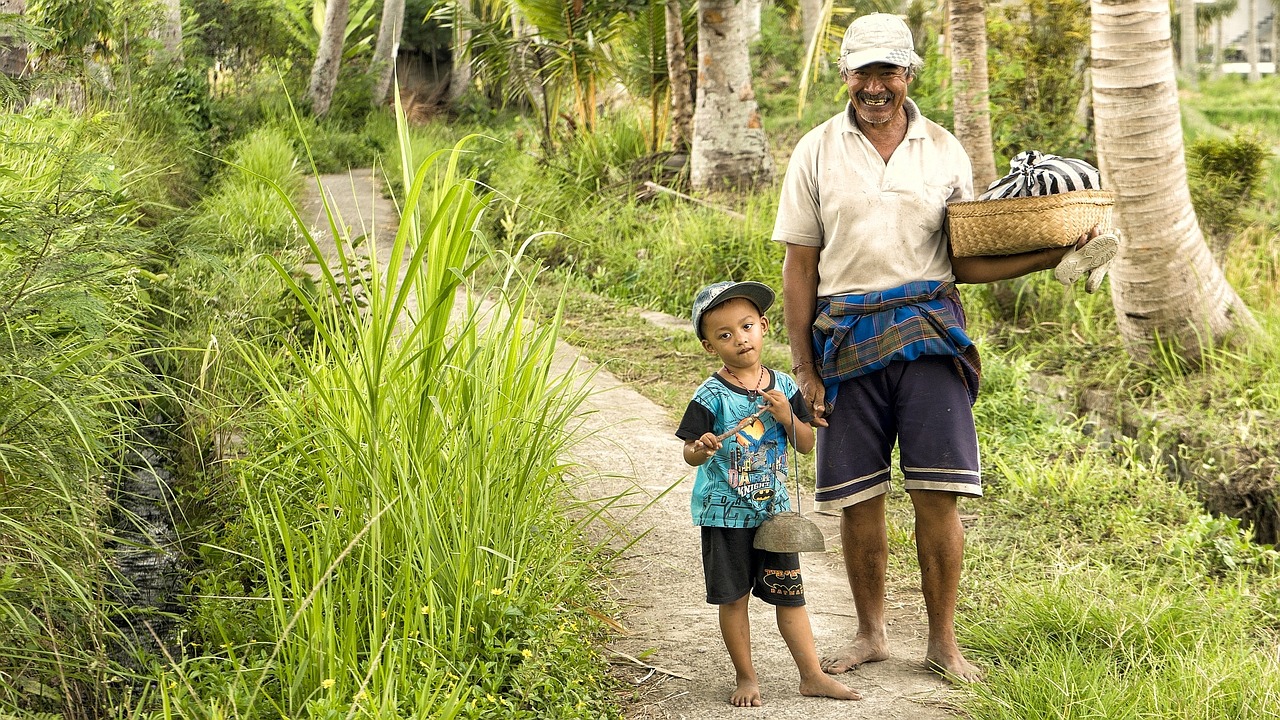
Are you planning a family vacation and wondering if there are guided tours that are suitable for your young children? Look no further! In this article, we will explore the various options available for guided tours that cater specifically to the interests and needs of young children. From interactive museum tours to nature exploration adventures, you will discover a range of experiences that will captivate and engage your little ones. Say goodbye to the days of worrying about whether your children will enjoy or be able to keep up with a guided tour, because we have got you covered. Brace yourself for an unforgettable family adventure! Yes, there certainly are! Guided tours can be a fantastic way to introduce young children to new experiences and help them learn and explore in a fun and engaging way. Whether it’s visiting theme parks, zoos, museums, or other attractions, there are plenty of options available that cater specifically to young children. In this article, we will guide you through everything you need to know about guided tours for young children – from choosing the right tour to keeping your child engaged during the trip.

This image is property of pixabay.com.
Guided Tours for Young Children
Theme parks and attractions
Theme parks and attractions are always high on the list of many young children’s favorite places to visit. From thrilling rides to colorful characters, these tours offer endless excitement and entertainment. Many theme parks provide guided tours specifically designed for young children, ensuring that the activities and content are age-appropriate and engaging. These tours often include guided walks through different themed areas, interactive shows, and opportunities to meet beloved characters. With a guided tour, you can rest assured knowing that your child will have a safe and enjoyable experience.
Zoo and animal sanctuaries
For animal-loving children, guided tours at zoos and animal sanctuaries can be a truly magical experience. These tours allow children to learn about various animals, their habitats, and conservation efforts, all while getting up close and personal with some amazing creatures. Guided tours often include educational talks, feeding sessions, and behind-the-scenes access to areas not accessible to the general public. The expert guides can provide fascinating information and answer any questions your child may have, ensuring a memorable and educational visit.
Museums and interactive exhibitions
Museums and interactive exhibitions are a great way to expose young children to art, culture, and history. Many museums offer guided tours specifically tailored to children, making the experience more engaging and accessible. These tours often involve interactive activities, storytelling, and hands-on exhibits that allow children to actively participate and learn as they explore. Guided tours provide children with the opportunity to ask questions, understand the exhibits better, and gain a deeper appreciation for the world around them.
Choosing the Right Guided Tour
When it comes to choosing the right guided tour for your young child, there are a few key factors to consider.
Age-appropriate activities
One of the most important aspects to consider when choosing a guided tour is the age-appropriateness of the activities and content. Different tours may have different age restrictions or recommendations, so make sure to check if the tour is suitable for your child’s age group. Look for tours that offer activities and experiences that align with your child’s interests and abilities.
Educational content and engagement
While entertainment is important, the educational aspect of a guided tour should not be overlooked. Look for tours that offer educational content that aligns with your child’s interests or curriculum. Engaging activities that combine learning with fun can help foster a love for learning and curiosity in young children. Whether it’s learning about animals, history, or art, a well-designed guided tour can provide valuable educational opportunities for your child.
Safety measures in place
The safety of your child should always be a top priority. Before booking a guided tour, inquire about the safety measures implemented by the tour operator. Ensure that the tour provides adequate supervision, has appropriate child-to-staff ratios, and follows safety guidelines. Additionally, check if the tour staff are trained in first aid and emergency procedures. Knowing that your child is in safe hands will allow you to relax and enjoy the tour as well.
Tips for a Successful Guided Tour
To make the most out of your guided tour experience with your young child, consider the following tips:
Booking in advance
Popular guided tours for young children can often get fully booked, especially during peak seasons. To avoid disappointment, it is advisable to book your tour in advance. This will not only secure your spot but also give you the opportunity to plan your day accordingly.
Preparing your child for the tour
Prepare your child for the tour by giving them an idea of what to expect. Talk to them about the location, the activities they will be doing, and any special rules or guidelines they should follow. You can also show them pictures or videos related to the tour to build excitement and familiarity. This will help alleviate any potential anxiety or uncertainty they may have.
Bringing essential items
When going on a guided tour with a young child, it is essential to pack some essential items to ensure their comfort and enjoyment. Don’t forget to bring snacks, water, sunscreen, hats, and any necessary medications. Having these items on hand will help keep your child happy and hydrated throughout the tour.
Guided Tours vs. Self-Guided Explorations
Both guided tours and self-guided explorations have their own advantages and disadvantages. Let’s take a look at some of the pros and cons of each option.
Pros and cons of guided tours
Guided tours offer the advantage of having a knowledgeable guide who can provide in-depth information and answer questions. They provide structure and organization to the experience, ensuring that you cover all the highlights and learn valuable insights. However, guided tours can sometimes feel rushed and may limit the flexibility and freedom to explore at your own pace.
Benefits of self-guided explorations
Self-guided explorations allow for more freedom and flexibility. You can take your time, focus on areas of interest, and explore at your own pace. This can be particularly beneficial if your child has specific interests or needs. Self-guided explorations also provide room for spontaneity and personal discoveries. On the other hand, self-guided explorations may lack the expert knowledge and structured learning provided by a guided tour.
Considerations for both options
When deciding between guided tours and self-guided explorations, consider your child’s age, interests, and learning style. Younger children may benefit more from guided tours that provide structure and engagement, while older children or those with specific interests may enjoy the freedom of self-guided exploration. Additionally, take into account your own comfort level and the level of preparation required for each option.

This image is property of pixabay.com.
Finding Guided Tours for Young Children
Now that you know the benefits of guided tours for young children and the factors to consider, let’s explore some ways to find the perfect tour for your child.
Online search and review platforms
The internet is a valuable tool when it comes to finding guided tours for young children. Use search engines or specialized platforms that allow you to filter tours based on age, location, and interests. Read reviews from other families to get an idea of the quality and suitability of the tours you are considering.
Recommendations from family and friends
Personal recommendations from family and friends can be a great way to find reliable and trusted guided tours for young children. Ask around to see if anyone has had positive experiences with guided tours and if they have any recommendations. Getting firsthand feedback from people you trust can help you make an informed decision.
Local visitor centers and tourism offices
Visitor centers and tourism offices in your area can provide valuable information on guided tours available for young children. These centers often have brochures, maps, and knowledgeable staff who can guide you in choosing the right tour. They can also provide information on any special events or discounts that might be available.
Popular Guided Tours for Young Children
Now that you have an idea of how to find guided tours for young children, here are some popular options to consider:
City sightseeing tours
City sightseeing tours can be a great way to introduce young children to new cultures, landmarks, and history. These tours often include visits to famous monuments, museums, and attractions, providing a comprehensive overview of the city’s highlights.
Nature and wildlife tours
Nature and wildlife tours allow children to connect with nature and learn about different ecosystems and animals. These tours can include visits to national parks, botanical gardens, or wildlife reserves, providing opportunities to observe and learn about various species.
Farm and agricultural tours
Farm and agricultural tours offer a hands-on experience for young children, allowing them to learn about farm animals, crops, and agricultural practices. These tours often involve activities such as feeding animals, picking fruits or vegetables, or even a tractor ride.

This image is property of pixabay.com.
Guided Tours for Specific Interests
If your child has specific interests, you can find guided tours that cater to those interests. Here are a few examples:
Art and creativity-focused tours
Art and creativity-focused tours can introduce children to different forms of art and stimulate their imagination. These tours may include visits to art galleries, interactive workshops, or even opportunities to create their own artwork.
Science and technology-themed tours
Science and technology-themed tours are perfect for curious young minds who have an interest in science, technology, and innovation. These tours often include visits to science museums, interactive exhibits, and hands-on experiments.
History and heritage tours
History and heritage tours provide an opportunity for children to learn about the past and the significance of historical sites. These tours can include visits to museums, historical landmarks, and guided walks through historic neighborhoods.
Tips for Keeping Children Engaged During a Guided Tour
Keeping young children engaged during a guided tour can be a challenge. Here are some tips to make the experience more enjoyable for them:
Interactive activities and games
Look for guided tours that offer interactive activities and games to keep children engaged. These can include scavenger hunts, quizzes, or hands-on experiments. Interaction and participation make the tour more exciting and memorable for young children.
Encouraging curiosity and questions
Encourage your child to ask questions and be curious about what they see during the tour. Engaging with the tour guide and asking questions helps children actively process information and stimulates their curiosity. It also allows the guide to tailor the tour to your child’s interests and provide a more personalized experience.
Involving children in the tour
Where possible, involve your child in the tour by allowing them to participate in certain activities or demonstrations. This can include feeding animals, handling artifacts under supervision, or even taking part in reenactments. The more involved your child is, the more memorable and meaningful the tour will be for them.
Benefits of Guided Tours for Young Children
Guided tours provide numerous benefits for young children beyond just entertainment. Here are some of the key advantages:
Educational opportunities
Guided tours offer structured learning experiences that can enhance a child’s knowledge and understanding of various subjects. They provide valuable information, foster curiosity, and encourage active participation. Guided tours can complement and reinforce what children learn in school, making education more exciting and engaging.
Social and emotional development
Guided tours provide opportunities for children to interact with peers, tour guides, and other visitors, enhancing their social and emotional development. They learn how to communicate, cooperate, and share experiences with others, building important social skills. Guided tours also offer opportunities for children to step out of their comfort zone and develop resilience and confidence.
Exposure to new experiences
Guided tours expose young children to new experiences, places, and ideas. They broaden their horizons and nurture a sense of curiosity and wonder about the world around them. Guided tours can introduce children to different cultures, values, and perspectives, fostering tolerance and acceptance.
Conclusion
Guided tours can provide invaluable educational and enriching experiences for young children. From theme parks and animal sanctuaries to museums and interactive exhibitions, there are plenty of options to choose from. By considering the age-appropriateness of activities, the educational content provided, and the safety measures in place, you can ensure that your child has a memorable and enjoyable tour. Whether you opt for guided tours or self-guided explorations, the key is to find the right balance that suits your child’s interests and needs. So, go ahead and embark on an exciting guided tour with your young child – a world of discovery and adventure awaits!



